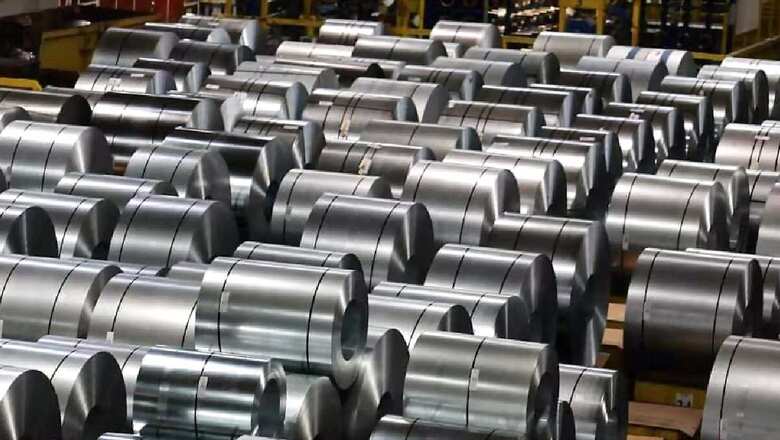
views
Domestic steel consumption in India is expected to grow at a healthy pace of 9-10 per cent in the ongoing financial year 2024-25, according to the latest report released by rating agency ICRA on Thursday. It said the demand was robust in Q1 FY2025, with consumption growing at a rate of 15% on a year-on-year basis amid competitively priced imports.
ICRA also expects the industry to witness capacity utilisation at a decadal high of nearly 88 per cent in spite of an all-time high capacity addition of 15.6 mtpa in FY2025 as well as the surge in imports.
However, it said that demand may record some sequential slowdown in the current quarter due to the seasonality associated with the monsoon, following which the government’s capex may display a back-ended pick up.
For the last three years, the steel industry has been going through the fastest period of growth witnessed since the global financial crisis. In FY2024, the industry registered a consumption growth of 13.6 per cent, which is only marginally lower than the peak of 13.9 per cent registered in FY2006 during the golden period of India’s private sector capex, ICRA said in the report.
“Steel being a globally traded commodity, the external environment, therefore, plays a crucial role in determining the health of the domestic industry. Given the sub-par economic growth outlook in China, along with other leading global steel-producing and consuming hubs, steel trade flows have been redirected to high-growth markets like India. Consequently, domestic finished steel imports have been steadily rising since FY2023,” ICRA stated.
Commenting on the industry trends, Girishkumar Kadam, senior vice-president & group head, corporate sector ratings, ICRA, said, “India’s finished steel imports increased by 35.4 per cent in Q1 FY2025 and India remained a net finished steel importer in Q1 of FY2025, in line with the trend seen in FY2024. To curb imports, the Government of India initiated an anti-dumping investigation into steel imported from Vietnam, a key exporter of steel to India in recent years, accounting for almost 9 per cent of India’s finished steel imports in FY2024. Interestingly, Vietnam had also earlier initiated a similar probe into steel imports from India. However, with domestic steel prices already trading at a premium to import parity prices, substantial duties would be required to have any significant impact on domestic prices.”
Steelmakers have been on a capacity expansion spree, post Covid, with around 26.3 million tonne per annum (mtpa) being commissioned between FY2021 and FY2024, and another 27.5 mtpa of new steel-making capacity expected to come onstream between FY2025 and FY2027. This rapid pace of fresh capacity creation has been unparalleled in India. The industry is poised to witness an all-time-high capacity addition of 15.6 mtpa in FY2025. These additions, however, have been adequately counterbalanced with incremental demand, helping shore up the industry’s utilisation level to a decadal high of 88 per cent in FY2024/ FY2025E.
Kadam said, “Domestic steel prices have been under pressure from mid-May 2024 on the back of unabated imports. Despite this, steel spreads will remain supported by the significant correction in raw material prices seen in recent months. Australian origin prime hard coking coal has corrected by almost 45 per cent from the high watermark of $338/MT (FoB basis) in the second week of January 2024, to $185/MT in the first week of September 2024.”
With coking coal accounting for 40-50 per cent of the overall operating cost for a primary steelmaker, this material input cost moderation, along with iron ore price reductions with the leading merchant iron ore producer NMDC Limited slashing iron prices by almost 18 per cent from the peak levels seen in the month of May/June of 2024, will support steel spreads going forward. However, some moderation is expected in spreads in Q2 FY2025 as the benefits of the lower raw material costs will be available with a lag. Gross steel spreads are expected to contract by around Rs 500-1,000/MT on a sequential basis for primary steelmakers in Q2 FY2025, before inching up from Q3 onwards, he added.



















Comments
0 comment